Energy Utility

Are there government programs that assist with reducing utility costs ?
There are several government programs designed to help individuals and families reduce their utility costs, including Low Income Home Energy Assistance Program (LIHEAP), Weatherization Assistance Program (WAP), State and Local Utility Assistance Programs, Energy Efficiency Tax Credits and Rebates, Renewable Energy Incentives, and Community Action Agencies (CAAs). These programs provide financial assistance, energy efficiency improvements, and other resources to make it easier for people to manage their bills.

What are some effective ways to save on utility costs ?
Saving on utility costs is an essential part of household management. Here are some effective ways to reduce your utility expenses: 1. **Energy-Efficient Appliances**: Replace old appliances with energy-efficient ones and maintain them regularly. 2. **Smart Thermostat**: Install a programmable thermostat and optimize temperature settings for energy savings. 3. **Water Conservation**: Fix leaks and install low-flow showerheads and faucets to save water and money. 4. **Lighting**: Switch to LED bulbs and use natural light during the day to reduce energy consumption. 5. **Insulation and Sealing**: Properly insulate your home and seal gaps and cracks to improve energy efficiency. 6. **Laundry**: Wash clothes in cold water and use a clothesline instead of a dryer to save energy. 7. **Electronics and Devices**: Unplug unused appliances and use power strips to avoid standby power consumption. 8. **Solar Power**: Consider installing solar panels or solar water heaters for long-term energy savings. By adopting these strategies, you can effectively reduce your utility costs and live a more energy-efficient lifestyle.

What is the cost of meeting building energy efficiency standards for homeowners and builders ?
Meeting building energy efficiency standards is crucial for reducing energy consumption and promoting sustainability, but it comes with certain costs that both homeowners and builders need to consider. The initial investment includes design and planning fees, high-performance windows and doors, insulation, energy-efficient appliances, skilled tradespeople, and additional time. Ongoing maintenance and operation costs include utility bills, potential tax credits and rebates, regular inspections, repairs, and replacements. Despite the costs, meeting these standards offers benefits such as reduced carbon footprint, improved air quality, health and comfort, lower utility bills, and increased property value.

Is it possible to lower my monthly utility expenses without sacrificing comfort ?
Yes, it is definitely possible to reduce your monthly utility expenses without compromising your comfort. Here are some tips and strategies that you can implement: - **Energy-efficient appliances**: Replace old appliances with energy-efficient models to save on electricity bills. - **Thermostat settings**: Adjust your thermostat settings to save money on heating and cooling. - **Lighting**: Use LED bulbs to use less energy and last longer than traditional incandescent bulbs. - **Water usage**: Fix leaks to save on your water bill. - **Insulation**: Improve insulation to keep your home warm in winter and cool in summer, reducing the need for heating and cooling. - **Unplug electronics**: Unplug electronics when not in use to save on your electricity bill. - **Shop around**: Shop around for better deals on your utilities. - **Be mindful of usage**: Be aware of how much water, gas, and electricity you're using to identify areas where you can cut back.

How can I make my home more energy-efficient ?
Making your home more energy-efficient can reduce your carbon footprint, save money on utility bills, and improve the comfort of your living space. To achieve this, consider proper insulation, improving window and door performance, optimizing heating and cooling systems, using energy-efficient appliances and electronics, and switching to energy-efficient lighting options. By implementing these strategies, you can enjoy the benefits of a more sustainable future.

Are there any energy-saving tips for households ?
Energy conservation is essential for reducing environmental impact and utility bills. Here are some energy-saving tips for households: using energy-efficient light bulbs, maximizing natural light, setting thermostats to comfortable temperatures, using ceiling fans instead of air conditioning, sealing windows and doors, insulating the home, unplugging electronics when not in use, washing clothes in cold water, choosing energy-efficient appliances, lowering water heater temperature settings, insulating water heaters and pipes, fixing leaky faucets and showerheads, turning off electronic devices when not in use, using power management features on computers, and avoiding leaving devices on standby mode overnight. By implementing these tips, households can reduce their energy consumption and save money while contributing to a healthier environment.

How do energy-efficient buildings affect a company's bottom line ?
Energy-efficient buildings positively impact a company's profitability by reducing energy costs, enhancing employee productivity, and improving environmental performance. These benefits include lower utility bills from reduced energy consumption, increased revenue from healthier and more productive employees, and improved corporate image that attracts talent and eco-conscious customers. Despite higher initial investment, the long-term advantages make such expenditures beneficial for sustainable business growth.

How does solar energy work ?
Solar energy is generated through the use of solar panels containing photovoltaic cells, which convert sunlight into electricity via the photovoltaic effect. This process involves absorbing sunlight, exciting electrons to a higher energy level, generating an electrical current, collecting it, and converting it into usable AC electricity. Solar energy is renewable, sustainable, cost-effective, and environmentally friendly, but its effectiveness can be reduced by weather conditions, and it requires additional equipment for energy storage. Despite high upfront costs, solar energy systems can lead to long-term savings on utility bills.

How do smart thermostats contribute to energy savings ?
Smart thermostats contribute to energy savings through automatic temperature control, energy-saving modes, learning capabilities, remote access and control, reporting and analytics, and integration with other smart devices. These features help reduce unnecessary energy usage and optimize HVAC system performance, leading to cost savings on utility bills without sacrificing comfort.

How do smart living gadgets contribute to energy efficiency in homes ?
Smart living gadgets play a significant role in enhancing energy efficiency in homes. They automate and optimize household operations, resulting in reduced energy consumption and lower utility bills. Smart thermostats allow remote control of heating and cooling systems, while smart light bulbs can be controlled remotely and set to turn on/off automatically. Smart plugs and power strips monitor and control power consumption of appliances, reducing standby power waste. Smart water heaters optimize hot water production based on demand, reducing unnecessary energy consumption. Adopting these devices can help homeowners reduce energy consumption, lower utility bills, and contribute to a more sustainable future.

Can energy-efficient lighting systems be used in commercial buildings as well as residential homes ?
Energy-efficient lighting systems offer significant energy savings, reduced maintenance costs, and environmental benefits. LED, CFL, and halogen lighting are common types of energy-efficient lighting systems that can be used in both commercial buildings and residential homes. By choosing an energy-efficient lighting system, users can contribute to a more sustainable future while also saving money on utility bills.

How can I install a distributed energy system in my home or business ?
Installing a Distributed Energy System (DES) in your home or business can significantly reduce reliance on the grid and provide financial savings. The process involves assessing energy needs, site evaluation, financial analysis, system design, permitting, installation, and maintenance. Choosing the right technology, sizing the system appropriately, and selecting quality equipment with certified installers are crucial steps. Permitting includes checking local regulations and coordinating with the utility for interconnection. Installation involves mounting equipment, electrical connections, and system checks. Maintenance ensures optimal performance through cleaning, inspections, and performance tracking. This investment requires careful planning but offers substantial rewards.
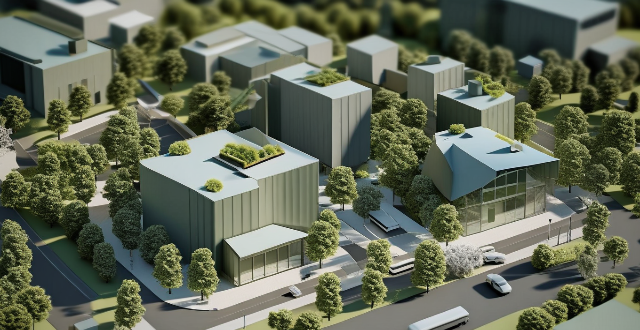
How do energy-efficient buildings reduce carbon footprint ?
Energy-efficient buildings are crucial for reducing carbon footprint by minimizing energy use and optimizing resources. They incorporate features like proper insulation, air tightness, advanced HVAC systems, renewable energy sources, and smart technology to reduce energy consumption, lower greenhouse gas emissions, and mitigate climate change impact. These structures offer benefits such as lower utility bills, increased comfort, reduced maintenance costs, and higher resale value. Energy-efficient buildings play a significant role in combating climate change and promoting a sustainable future.
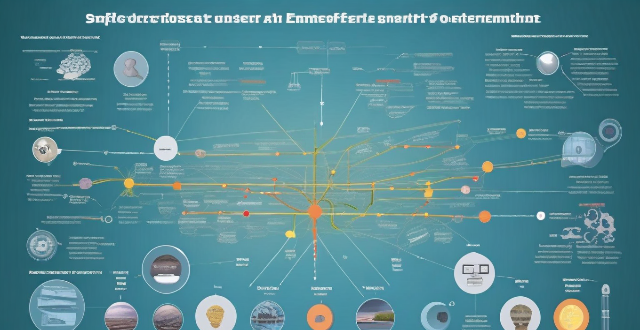
What are the costs associated with implementing a distributed energy system ?
This article discusses the different types of costs associated with implementing a distributed energy system, including initial investment costs, operational costs, and energy costs. It also emphasizes the importance of carefully considering these costs before making any decisions about whether or not to invest in such a system.

How have building energy efficiency standards evolved over time ?
The evolution of building energy efficiency standards has been significant over the years, with a focus on reducing energy consumption and environmental impact. Early beginnings saw little consideration for energy consumption, leading to high utility bills and greenhouse gas emissions. The rise of energy conservation in the 1970s led to the development of the first building energy efficiency standards, focusing on measures such as improved insulation and efficient heating and cooling systems. The advent of green buildings in the 1990s brought new standards that minimized environmental impact through the use of renewable energy sources and sustainable materials. Technology has played a significant role in improving energy efficiency, with advances such as smart thermostats and LED lighting. Looking to the future, there is likely to be a greater emphasis on reducing energy consumption in buildings, leading to stricter standards and the development of new technologies. Overall, building energy efficiency standards have evolved to become an essential part of modern building design and construction.

How can I save energy with appliance usage at home ?
The provided text offers energy-saving tips for various home appliances, including refrigerators, dishwashers, washing machines, dryers, ovens and cooktops, lighting, and thermostats. It suggests setting the fridge temperature correctly, defrosting it regularly, and keeping it full but not overstuffed. For dishwashers, it recommends running full loads and using the energy-saving setting. Washing machines should be used with cold water and the appropriate wash cycle. Dryers should have a clean lint filter after each use and dry similar fabrics together. Smaller appliances should be used for small meals when cooking, and the oven door should remain closed. LED bulbs should replace traditional incandescent bulbs, and lights should be turned off when not in use. A programmable thermostat should be used to set specific temperatures for different times of the day, and the temperature should be lowered in winter and raised in summer. Following these tips can significantly reduce home energy consumption, save money on utility bills, and contribute to a more sustainable environment.

How can existing buildings be retrofitted for energy efficiency ?
Retrofitting existing buildings for energy efficiency involves several strategies, including conducting an energy audit, upgrading insulation, installing energy-efficient windows and lighting systems, optimizing HVAC systems, using energy-efficient appliances, implementing water-saving measures, sealing air leaks, investing in renewable energy sources, and encouraging energy-conscious behavior. These steps can lead to cost savings, increased comfort, and reduced environmental impact.

What are the benefits of energy-efficient buildings ?
Energy-efficient buildings offer numerous benefits, including environmental advantages like reduced greenhouse gas emissions and conservation of natural resources, economic savings such as lower energy bills and increased property value, health improvements through better indoor comfort and air quality, and social effects like job creation and community standards. These buildings are a smart investment that provide long-term savings and promote a greener planet.

Are there any drawbacks to using energy-efficient lighting systems ?
Energy-efficient lighting systems offer reduced energy consumption and cost savings, but come with potential drawbacks such as higher upfront costs, compatibility issues, color quality concerns, maintenance and disposal challenges, and potential health risks. It's important to weigh the pros and cons carefully before making a final choice.

What is the role of government in setting building energy efficiency standards ?
The role of government in setting building energy efficiency standards is crucial for promoting sustainable development, reducing energy costs, improving public health, driving innovation and technology advancements, and creating job opportunities. By working together with industry stakeholders and the public, governments can help shape a more sustainable future for all.

What are some potential challenges and drawbacks of distributed energy systems ?
Distributed energy systems (DES) offer benefits such as increased energy independence and reduced carbon emissions, but they also present several challenges. These include interconnection issues with the power grid, reliability concerns due to weather dependency and storage limitations, high upfront costs, complex permitting processes, operation and maintenance expenses, environmental impacts from resource extraction and waste management, potential job losses in traditional energy sectors, and shifts in energy market dynamics. Addressing these challenges requires technological innovation, policy development, and consumer education.

How can we reduce energy consumption in households ?
Reducing energy consumption in households is crucial for saving money and promoting environmental sustainability. Effective methods include switching to energy-efficient appliances, improving insulation, using LED lighting, optimizing heating and cooling, saving water, unplugging electronics, utilizing natural lighting and ventilation, cooking efficiently, and adopting energy-saving habits in laundry and cleaning. Educating family members and monitoring energy usage are also key steps towards reducing a household's energy consumption.

How do energy-efficient appliances help decrease carbon footprints ?
Energy-efficient appliances contribute to a smaller carbon footprint by reducing energy consumption, improving efficiency, and having a longer lifespan. Government incentives encourage the adoption of these eco-friendly options, leading to lower energy bills, increased comfort, environmental sustainability, reduced maintenance costs, and enhanced property value. Examples of energy-efficient appliances include refrigerators, washing machines, air conditioners, light bulbs, and water heaters. By choosing energy-efficient appliances, we can all contribute to a greener planet and a healthier future for generations to come.

How does proper insulation contribute to energy efficiency ?
Proper insulation is crucial for energy efficiency, providing thermal comfort, reducing energy costs, and alleviating strain on power grids. It also improves indoor air quality by controlling moisture and limiting allergens. Furthermore, it decreases greenhouse gas emissions, supports sustainable living, and offers long-term economic benefits like higher property value. Implementing proper insulation involves sealing air leaks, considering R-values, and focusing on key areas like attics and basements.

How can individuals invest in clean energy projects ?
Investing in clean energy projects is a way to support sustainable development and fight climate change. Individuals can invest through renewable energy mutual funds, green bonds, direct investment in clean energy companies, community solar projects, and sustainable real estate investments. Examples include iShares Global Clean Energy ETF (ICLN), Toyota Green Bond, and Eco-friendly apartment complexes.

What are the benefits of energy-efficient lighting systems ?
Energy-efficient lighting systems offer multiple benefits, including reducing energy consumption and positively impacting the environment, economy, and overall well-being. They help lower greenhouse gas emissions and promote sustainability by lasting longer and using recyclable materials. Economically, these systems reduce energy costs and require fewer replacements over time, making them cost-effective. They also provide better visual comfort, reducing eye strain and increasing productivity, while producing less heat for a more comfortable environment. Upgrading to energy-efficient lighting systems contributes to a more sustainable future for all.
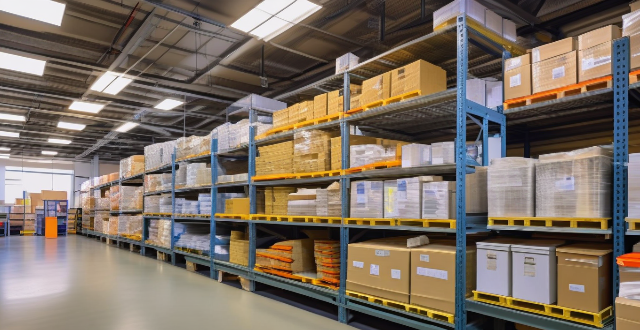
How can energy storage be integrated with smart grid technologies ?
Energy storage plays a pivotal role in the development and operation of smart grids. It provides flexibility to the system, enabling it to manage variable renewable energy sources, enhance reliability, and improve efficiency. The benefits of energy storage in smart grids include balancing supply and demand, integrating renewable energy, improving grid stability and reliability, enhancing efficiency, and saving costs. Methods of integration include distributed energy resource management (DERMS), advanced metering infrastructure (AMI), grid optimization software, and energy management systems (EMS). However, challenges such as interoperability, cybersecurity, regulation and standardization, and cost must be addressed. Integrating energy storage with smart grid technologies is crucial for achieving a modernized, efficient, and sustainable electrical grid.
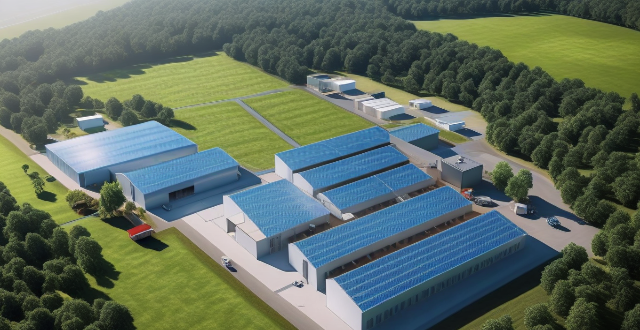
What are some examples of distributed energy systems ?
Distributed energy systems (DES) are small-scale power generation units located close to end-users, offering benefits like increased energy efficiency and reduced environmental impact. Examples include solar PV systems, wind turbines, fuel cells, and microgrids. These systems can operate independently or connect to the main power grid. Solar PV systems convert sunlight into electricity using silicon cells, while wind turbines harness wind's kinetic energy. Fuel cells generate electricity through a chemical reaction of hydrogen and oxygen. Microgrids are localized groups of interconnected loads and distributed energy resources that can operate independently from the main power grid. DES contribute to a more sustainable future by improving energy efficiency, reducing environmental impact, and enhancing electricity supply reliability.
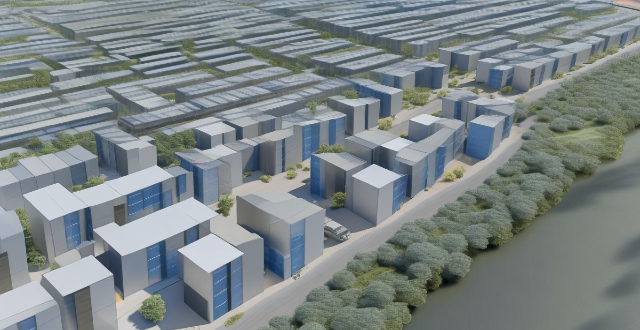
What is the future potential of compressed air energy storage (CAES) ?
Compressed air energy storage (CAES) is a promising technology that has the potential to revolutionize the way we store and use energy. Key points about its future potential include increased efficiency and scalability, low cost and long lifespan, environmental benefits, and integration with other technologies. CAES systems can be scaled up or down depending on the amount of energy storage required and offer good value for money over their lifetime. They also have a long lifespan, typically lasting 20 years or more with proper maintenance. Additionally, CAES systems can help reduce carbon emissions by using renewable energy sources such as wind and solar. Finally, they can stabilize the grid during peak demand periods and be combined with other forms of energy storage to create hybrid systems that offer even greater flexibility and efficiency.

Are there any alternatives to lead-acid batteries for energy storage ?
Lead-acid batteries have been a popular choice for energy storage due to their cost-effectiveness and reliability. However, there are several alternatives available that offer different benefits depending on the specific application. Some of the most common alternatives include lithium-ion batteries, nickel-cadmium batteries, sodium-sulfur batteries, and flow batteries. Each of these options has its advantages and disadvantages, such as higher energy density, longer lifespan, faster charging capabilities, and potential safety risks. By considering factors such as energy density, lifespan, maintenance requirements, and environmental impact, you can choose the best option for your energy storage needs.